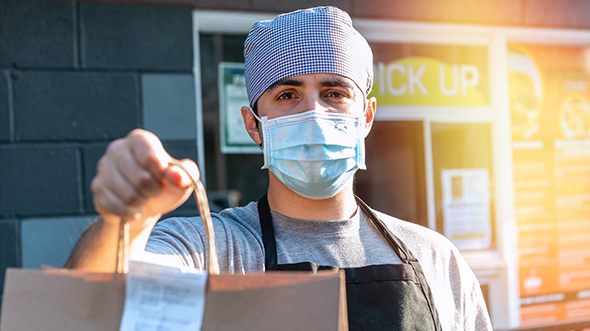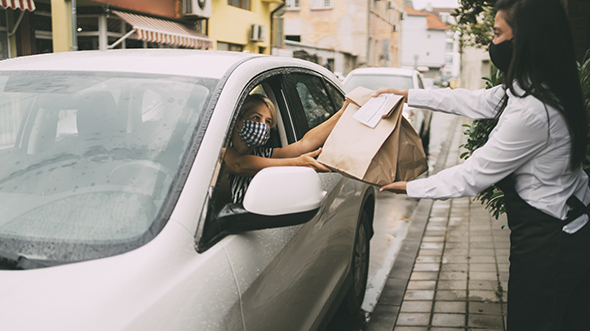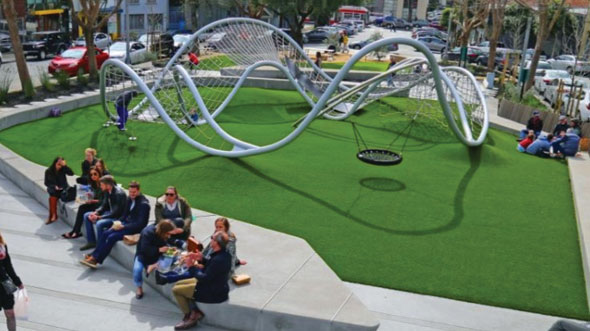
BLOG
—
How Retailers are Capitalizing on the Open Lane
Shoptalk, the largest retail and grocery conference in the country, held its digital meetup recently. I attended in the hopes of learning how COVID-19 has impacted trends, and how the retailer focus has shifted. Three days of flurried meetings and roundtable discussions came and went, and I can say, the future of retail is bright. In previous years, the focus of the event was in-store shopper analytics: where shoppers linger, how to merchandise and how shoppers are utilizing technical solutions, like shopping carts that auto-scan products. This year had a different tune—the focus was on streamlining user experience and improving overall brand interaction.
During the conference, I met various company types. Of course, you have retailers learning about the myriad solutions and trends on the market (what’s HOT), and you have the solution providers (like me) who are offering innovative ways to solve their challenges. But then in the middle, you have consultants set out as personal shoppers (no pun intended) to connect their retail and grocery clients with the solutions that will actually make a difference to their operations. With each of my conversations, I learned a little more about what makes this industry tick.
Here are a few of the major trends I encountered this year:
Click and Collect/Curbside Pickup: This is the last stop of the “buy online, pick up in store" process, also known as “BOPIS.” When a customer goes through your site to select a product and purchases an item, how do they get it? Are you shipping the item? Are you delivering the item through a third-party platform? Is the customer coming to pick it up? Due to the pandemic, the number of consumers not wanting to enter stores has increased dramatically. The consumers that utilized retailers with click and collect before the pandemic have raised their expectations in this new normal. The new click and collect/curbside pickup demand is driving retailers and grocers to innovate and immediately develop a functionality that would normally take six to 12 months to implement.
To large part, Woolpert developed GeoAwareness to address this. The location-enabled alerting solution that we announced earlier this year uses Google Location and Cloud tools and is open sourced to the public. This solution is a framework instead of a full-fledged software-as-a-service offering, allowing the retailer to easily implement it with current tools and workflows. The flexibility of the solution also allows development teams to mold a solution customized per individual needs.
Customer Behavior Analytics: In previous years, many of the Shoptalk conversations were focused on in-store behavior—where consumers will grab products, how to keep shelves stocked and how a consumer flows through a store. We heard about creative tactics, like Target providing shopping experiences that reflect their region or neighborhood. We saw companies like Best Buy introduce brand-specific mini stores within its main stores, allowing for expertise across brands to shine.
Since the pandemic, the focus is on e-commerce. Now analytics companies like Karrot have been brought in to study digital engagement with brands. They are helping retailers acquire data on consumers that drive actionable behaviors and can be monitored through sets of key performance indicators. I learned how companies are using artificial intelligence to help create engaging cart add-ons based on actual customer behavior, not just the standard end cap of HDMI cables and protection plans you normally see at the end of a checkout process.
Consumer Brand Engagement: With the world being thrust to the web—even an entire international retail conference—we are rethinking the relationship that we as consumers have with brands. What do we actually want in an online presence? Retailers are thinking about this, as well. They are moving away from the internet presence of brands as catalogs and toward their presence as intelligent customer workflows, highlighting new items or brands that match our personal buying behavior.
The Google Retail Team has pushed out a new “guidebook,” if you will, that focuses on how a consumer interacts with a brand through location—from using Google to find stores, enabling Google’s Business Chat, referencing implementation of Google’s new Store Locator Plus and using Autocomplete Address for checkout. This attention to consumer behavior is becoming increasingly important, while keeping overhead costs down and conversions up.
Although retailers have been forced into this new world, the way they are navigating this uncomfortable growth is refreshing. Moving forward, I expect to see an increased focus on the personalization of consumers’ online journeys and an even more fluid process for ordering and receiving goods.

Jeremy Quam
Jeremy Quam is a senior account executive for Woolpert, working with businesses and partners as a field sales rep to build mapping solutions, expand the use of Google tools and raise awareness of their problem-solving abilities. Jeremy draws on his sales, business, technology and industry knowledge to provide his clients with the ultimate experience.


